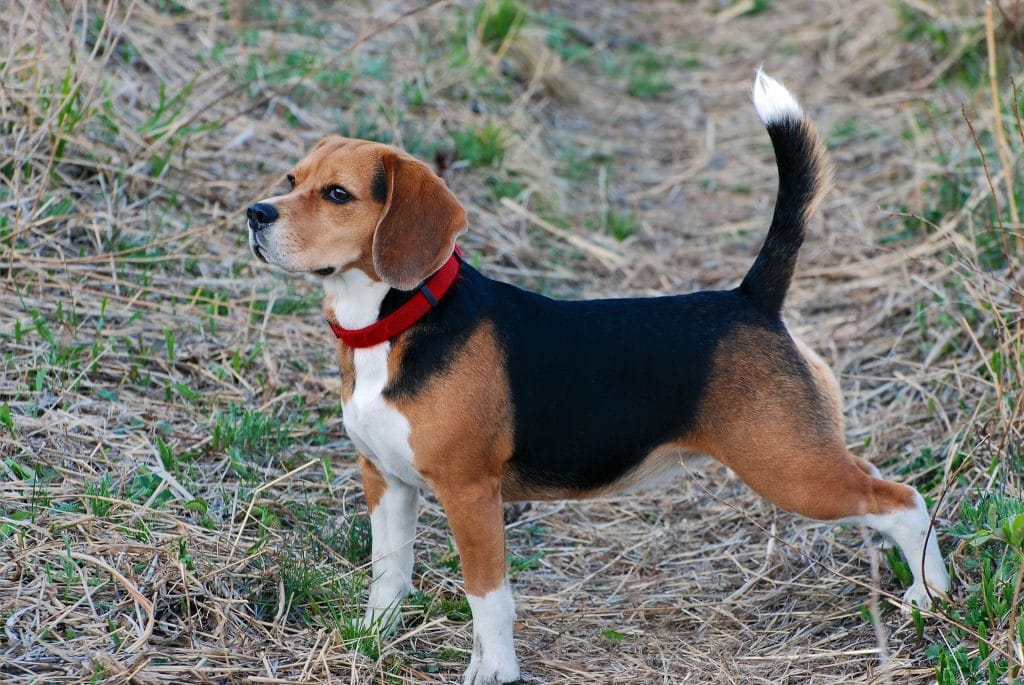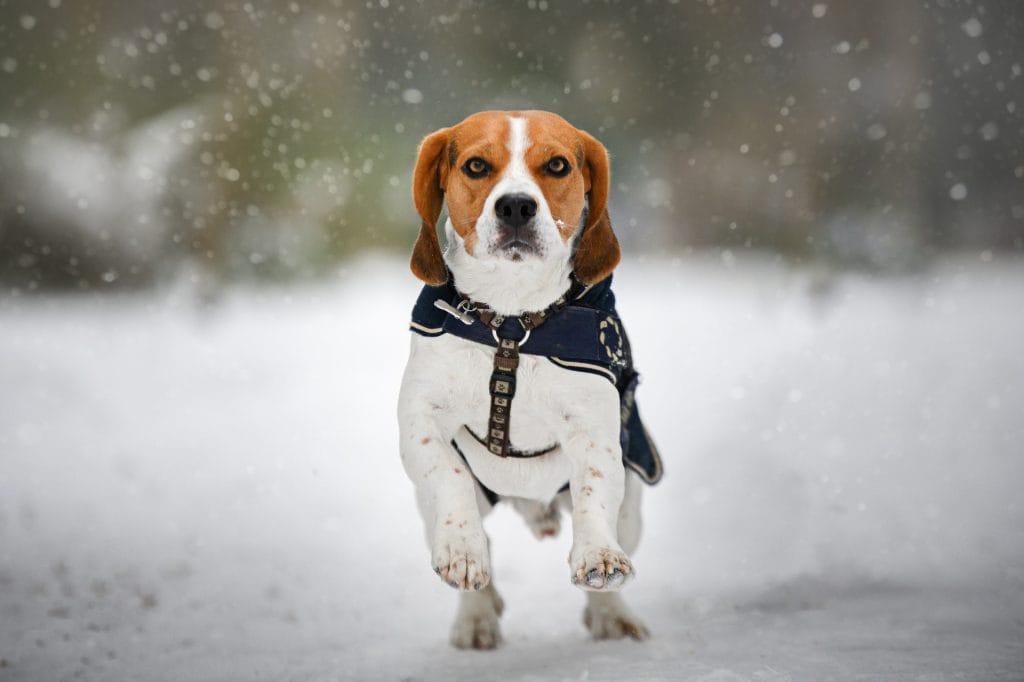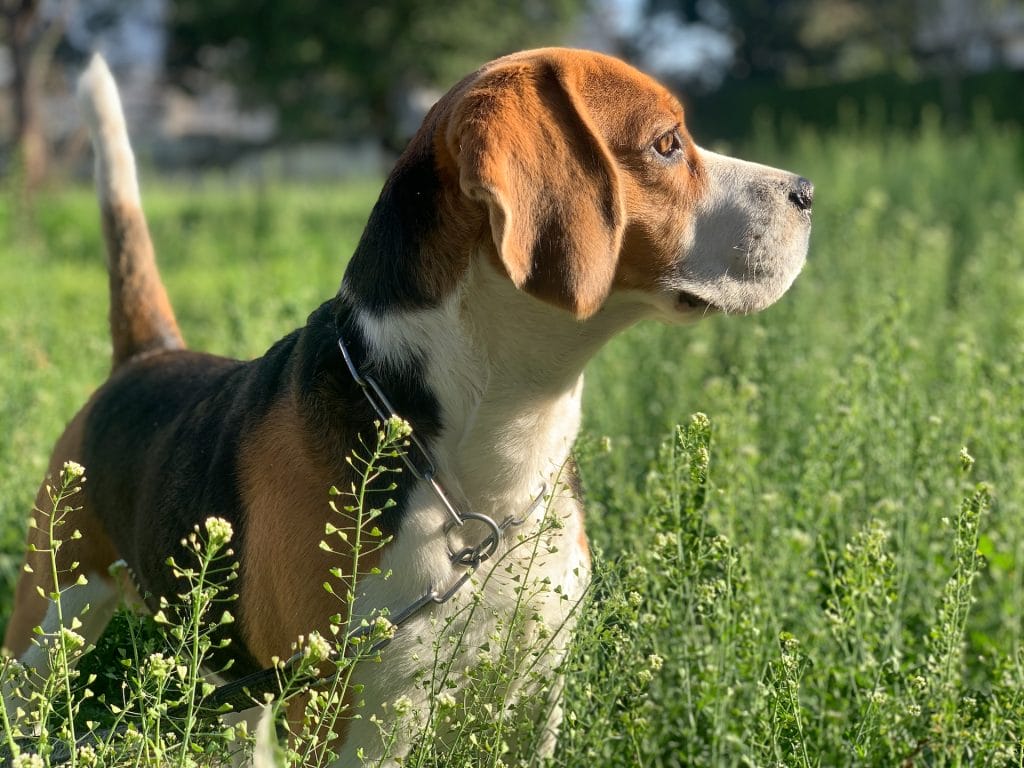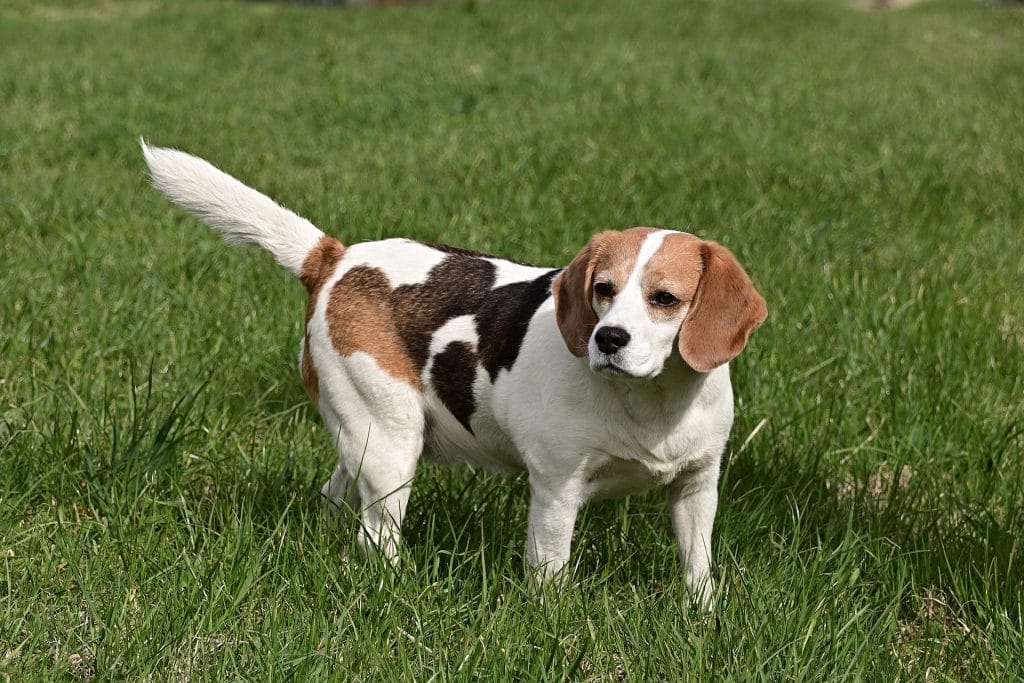Learn about the Beagle, including their history, characteristics, and care tips in this comprehensive guide. Discover why this breed is so popular in the USA.
The Beagles are a small to medium-sized breeds of hound, similar in appearance to the much larger foxhound.
They were originally bred to hunt small animals like rabbits. They have a great sense of smell and can track things very well.
Beagles are friendly, energetic, and curious dogs that make great family pets.

Beagles are Smart
Its History:
The Beagle is a breed of small-sized hound that originated in England. The American Kennel Club (AKC) recognized the breed in 1885.
The Beagle is one of the most popular dog breeds in the world today and is widely employed as a companion dog, as well as for hunting, tracking, and search and rescue purposes.
Some Popular Names
| Female Names | Male Names |
| Bella | Buddy |
| Daisy | Charlie |
| Lucy | Max |
| Molly | Rocky |
| Sadie | Jack |
| Sophie | Duke |
These names are just suggestions and you can choose any name that you like for your Beagle.
Related breeds of Beagle
The Beagle is a breed of small-sized hound, and here are some of the related species:
- Basset Hound: A breed similar in appearance and size to the Beagle, it is known for its floppy ears and laid-back personality.
- Bloodhound: This breed is known for its exceptional sense of smell and is often used as a tracking dog.
- Coonhound: This breed is a scent hound originally bred for hunting raccoons.
- Dachshund: This breed is known for its long, sausage-like body and is often used for hunting small game.
- Harrier: This breed is a type of scent hound that is similar in appearance to the Beagle but is taller and leaner.
- Otterhound: This breed is a scent hound originally bred for hunting otters.
- Walker Hound: This breed is a type of scent hound that is similar in appearance to the Beagle but is taller and leaner.
Characteristics of the Beagles:
| Characteristics | Description |
| Temperament | Amiable, Friendly, Intelligent, Curious and Energetic |
| Exercise | They need regular physical activity, exericse and playtime |
| Grooming | Low grooming needs and occasional brushing to remove loose hair is enough training |
| Training | Moderate training and consistent & positive reinforcement training is required |
| Good with Children | Generally good with children and make good family pets |
| Good with Other Pets | Good with other pets, especially if being socialized from a young age |
| Watchdog Ability | Good watchdog ability and they remain alert & have a strong sense of smell |
| Guard Dog Ability | Not an ideal guard dog, they are friendly and not aggressive |
| Hypoallergenic | NO |
Physical Characteristics of the Beagles
| Characteristics | Description |
| Size | Small to medium-sized dog |
| Weight | 18-30 pounds, with males usually weighing slightly more than females. |
| Life Expectancy | 12-15 years |
| Coat | Short, dense, and smooth coat |
| Coat color | Tricolor (black, white and tan), bicolor (white & black/ Chocolate/Tan, Lemon/Orange/Red & White) |
| Shedding level | Moderate shedders and they require regular brushing to manage shedding. |
| Head | Round with long, droopy ears |
| Ears | Long, droopy and floppy |
| Tail | Long, curved and carried high |
| Body | Compact, muscular and well-proportioned |
Suitable Groups of Beagle Ownership
| Groups | Reason |
| Singles | The Beagle is a small to medium-sized dog, making them easy to take care of for those living alone. They also have playful and friendly personalities, making them great companions for single people. |
| Families with children | Beagles are known for their affectionate and friendly nature, making them great pets for families with children. They are also energetic and playful, which makes them great playmates for kids. |
| Seniors | Beagles are easy to take care of, as they don’t require much exercise and have a low-maintenance coat. Their friendly and gentle personalities also make them great companions for seniors. |
| First-time dog owners | Beagles are easy to train, have a friendly and affectionate personality, and are easy to care for. These characteristics make them an excellent choice for first-time dog owners. |
Nutritional Requirements for Beagles
| Nutrition Type | Benefits | Examples |
| Fats | Provide energy, help maintain healthy skin and coat, support immune system function | Chicken fat, fish oil, flaxseed oil |
| Protein | Essential for muscle growth and repair, helps maintain a healthy immune system | Chicken, turkey, fish, lamb, beef |
| Carbohydrates | Provide energy, help maintain healthy brain function, support digestive health | Rice, barley, oatmeal, potatoes, sweet potatoes |
| High quality dry dog food | Provides essential nutrients, vitamins and minerals for overall health and well-being | Royal Canin Beagle Adult, Nutro Wholesome Essentials Small Breed, Wellness Complete Health Small Breed |
| Wet dog food | Can be used as a supplement to dry food, adds moisture to the diet, helps keep the skin and coat healthy | Merrick Classic Wet Dog Food, Blue Buffalo Homestyle Recipe, Hill’s Science Diet Wet Dog Food |
| Fresh fruits & vegetables | Can provide additional vitamins, minerals, and fiber to the diet, helps keep the digestive system healthy | Carrots, apples, green beans, sweet potatoes, pumpkin |
| Treats | Can be used for training or as a reward, but should be given in moderation to avoid overfeeding | Zuke’s Mini Naturals, Benebone Dental Chew, Kong Classic Dog Toy filled with peanut butter |
It’s important to include a balanced amount of each nutrient in your Beagle’s diet to ensure overall health and well-being.
Depending on your Beagle’s age, size, and activity level, the right amount of each nutrient may be different, so it’s best to talk to a vet about your dog’s needs.

General Guidelines When Feeding
Here is a general guide to consider when feeding a Beagle based on their age, size, and activity level:
| Age/Size | Descriptions |
| Puppies | Puppies require a high-protein diet to support their growth and development. They may also require multiple meals per day to meet their nutritional needs. |
| Adult Beagles | A balanced diet with the proper proportions of protein, lipids, and carbs is necessary for adult Beagles. They often require two meals a day. |
| Senior Beagle | As Beagles age, their energy levels may decrease, so they may need a lower-calorie diet to maintain a healthy weight. Old dogs may also benefit from added joint support from ingredients such as glucosamine and chondroitin. |
| Small or Miniature Beagles | Miniature Beagles may require slightly smaller food portions than standard-sized Beagles. |
| Active Beagles | Beagles who engage in regular exercise or physical activity may require slightly more food to maintain their energy levels |
It is important to note that every Beagle is unique, and their nutritional needs may vary. Talk to a veterinarian to find out what your Beagle needs regarding food.
Dietary Requirements for Beagles
| Age | Dietary needs | Serving Size (per day) | Feeding Schedule |
| Puppies (0-6 months) | High-protein, multiple small meals per day | 3-4 small meals per day | 3-4 small meals per day |
| Puppies (6-12 months) | High-protein, balanced diet | 2-3 small meals per day | 2-3 small meals per day |
| Adult Beagles (1-7 years) | Balanced diet | 1.5-2 cups per day | 2 meals per day |
| Senior Beagles (7+ years) | Lower calorie diet, added joint support | 1-1.5 cups per day | 2 meals per day |
| Miniature Beagles | Reduced portions | 1-1.5 cups per day | 2 meals per day |
| Active Beagles | Increased food intake | 1.5-2 cups per day | 2 meals per day |
Note that these serving sizes are based on a standard-sized Beagle and may change based on the activity level, weight, and metabolism of each dog. Always consult with a veterinarian to determine the right serving size and feeding schedule for your Beagle.
Exercise Requirements for Beagles
| Age | Daily Exercise | Notes |
| Puppies (0-6 months) | Short, frequent play sessions | Limit intense physical activity to prevent injury |
| Puppies (6-12 months) | Moderate, structured exercise | Gradually increase physical activity and intensity |
| Adult Beagles (1-7 years) | 1 hour of daily physical activity | Provide a mix of physical and mental stimulation |
| Senior Beagles (7+ years) | 30-45 minutes of daily physical activity | Reduce intensity and frequency to accommodate for aging joints |
| Miniature Beagles | 30-45 minutes of daily physical activity | Provide a mix of physical and mental stimulation |
| Active Beagles | 1-2 hours of daily physical activity | Maintain a high level of physical activity to meet their energetic needs |
Note that these guidelines for exercise are based on a standard-sized Beagle and may change depending on each dog’s activity level, weight, and health. Always consult with a veterinarian to determine the right exercise routine for your Beagle.
Grooming Tasks for Beagles
| Grooming Task | Frequency | Notes |
| Brushing | Weekly | Use a slicker brush to remove loose fur and prevent matting |
| Bathing | Monthly (or as needed) | Use a dog-specific shampoo to avoid skin irritation |
| Trimming nails | Monthly (or as needed) | Avoid over-cutting and causing bleeding |
| Cleaning ears | Monthly (or as needed) | Use a cotton ball and gentle cleaner to avoid irritation |
| Brushing teeth | Daily | Use a dog-specific toothbrush and toothpaste to maintain dental health |
| Checking paws and pads | Weekly | Trim any long hair and check for any cuts, bruises, or blisters |
| Eye cleaning | Weekly | Use a warm cloth to gently clean around the eyes and remove any discharge |
| Anal gland expression | Monthly (or as needed) | Have a professional groomer or veterinarian do this task to avoid injury |
| Trimming fur around paw pads | Monthly (or as needed) | Trim any long hair to prevent matting and injury |
| Trimming fur around anus | Monthly (or as needed) | Trim any long hair to prevent fecal matter from becoming trapped |
Note that grooming is also an essential aspect of caring for a beagle.
Regular grooming, including brushing, bathing, and nail trimming, helps keep the beagle healthy and comfortable.
By providing proper grooming, owners can also strengthen their bond with their beagle and ensure a happy and healthy life for their furry friend.

Training Techniques for Beagles
Positive Reinforcement:
Reward your Beagle with treats, praise, or playtime for good behavior to reinforce desired actions.
Consistency:
Be consistent with commands, rewards, and expectations to ensure your Beagle understands what you want from them.
Crate Training:
Introduce your Beagle to a crate early on to help with housebreaking, anxiety, and establishing a safe space.
Obedience Training:
For obedience training, start with basic commands like “sit,” “stay,” “come,” and “heel” to build a strong foundation for future training.
Leash Training:
Teach your Beagle to walk on a leash without pulling or tugging by rewarding calm behavior and using a suitable harness.
Socialization:
Expose your Beagle to a variety of people, animals, and environments to help them become well-rounded and adaptable.
Fetch Games:
Utilize your Beagle’s natural instincts for tracking and scent work with games that involve finding hidden objects or treats.
Puzzle Toys:
Use interactive toys to challenge your Beagle’s intelligence and keep them mentally stimulated.
Clicker Training:
Use a clicker to mark desired behaviors and reinforce them with rewards, helping your Beagle quickly understand what you want them to do.
Patience and Persistence:
Be patient and persistent with your training efforts, as Beagles can be stubborn and may require more time to learn certain commands or behaviors.
Agility Training:
Introduce your Beagle to agility courses to provide mental and physical stimulation while building their confidence and obedience skills.
Counter-Surfing Prevention:
Teach your Beagle to resist the temptation of jumping on counters or tables by reinforcing good behavior and redirecting their attention to appropriate activities.
Boundary Training:
Establish clear boundaries within your home and yard to keep your Beagle safe and secure.
Regular Exercise:
Provide ample opportunities for physical exercise to help burn off energy and reduce potential behavior issues.
Professional Help:
Consider enlisting the help of a professional dog trainer or attending obedience classes if you encounter challenges during your Beagle’s training process.
Note that Training a beagle is an important aspect of responsible pet ownership.
By utilizing positive reinforcement techniques and various training methods, owners can help their beagles become well-adjusted and obedient canine companions.
Beagles can learn and do well in new places if their owners are patient and consistent. They can bring their owners years of happiness and companionship.
Conclusion
In conclusion, Beagles are a remarkable breed known for their friendly nature, intelligence, and keen sense of smell.
These small to medium-sized hounds make excellent family pets, adapting well to various lifestyles, from singles to seniors.
As loving and loyal companions, they bring joy and happiness to their human families.
With proper care, nutrition, exercise, grooming, and training, Beagles can lead healthy, fulfilling lives and strengthen the bond between canine and owner.
By understanding and embracing the unique qualities of the Beagle breed, you can enjoy a long-lasting, enriching relationship with these endearing and spirited dogs.

